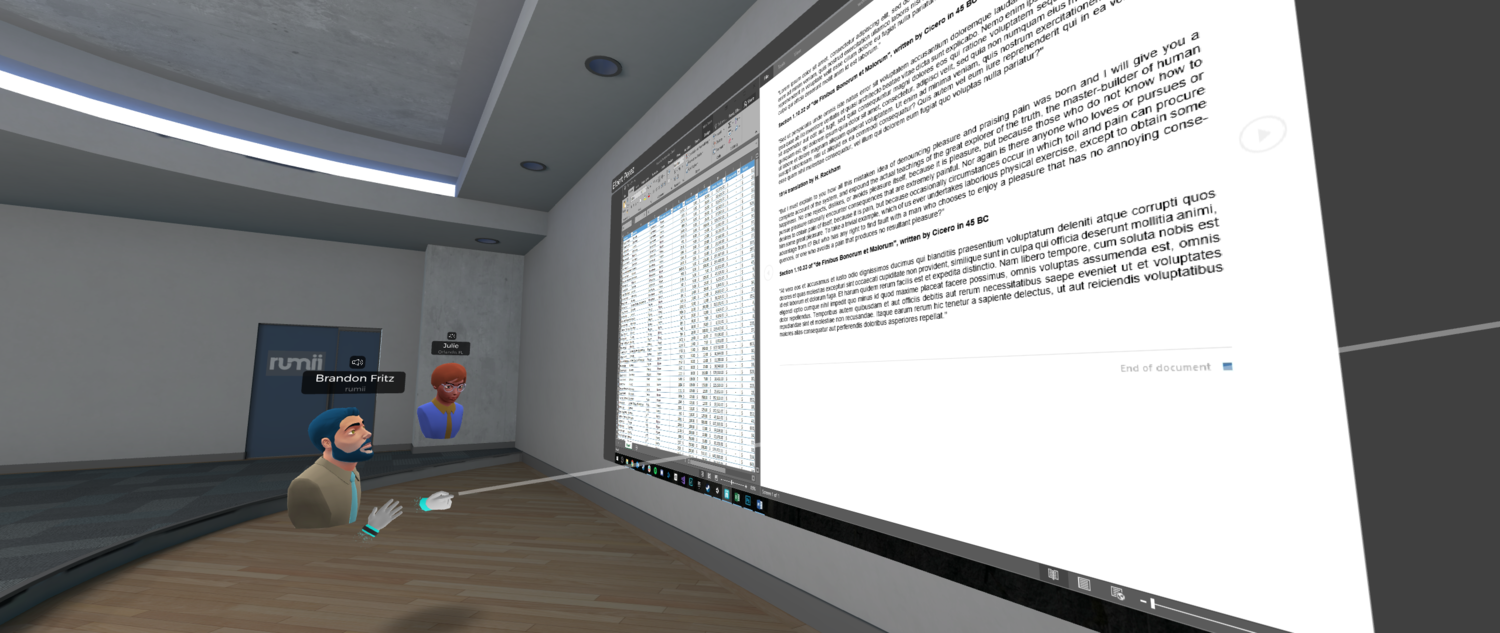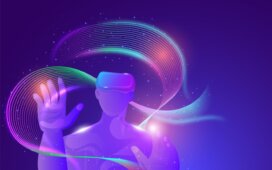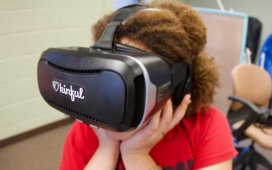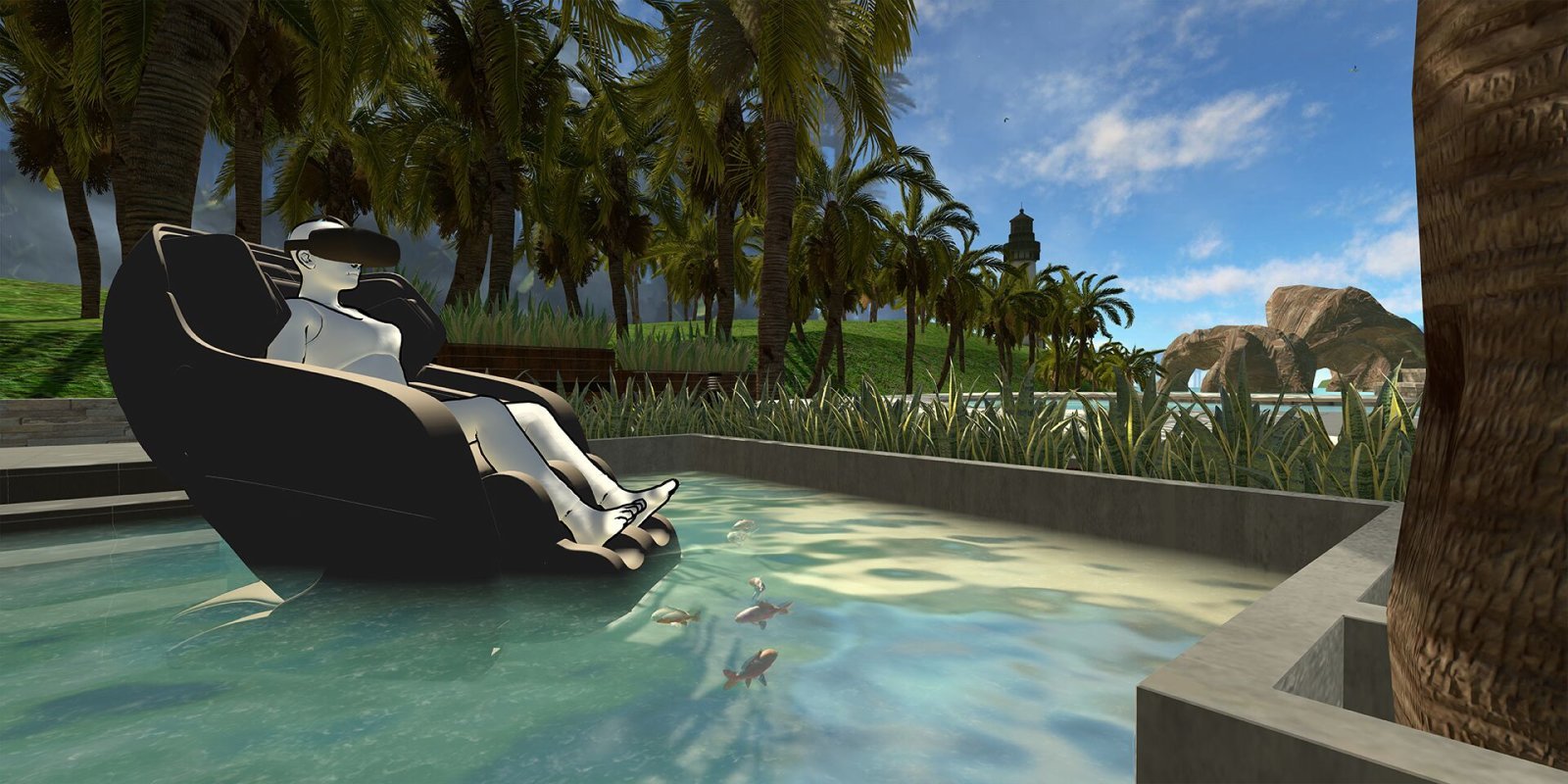Pinckney Benedict is an American short-story writer, novelist, and senior fiction writer at Southern Illinois University Carbondale.
About a year and a half ago, our fiction program decided to move from conventional workshops (short stories, novels, and so on, word processor stuff) to digital and technological modes of storytelling. Since then, we’ve funded and built a podcasting lab, a game design lab (based around PS4s and Media Molecule’s Dreams software), and a VR lab. This semester I’m teaching our first-ever class in VR Narrative. I don’t know of another creative writing program that has anything similar. These are classes and labs designed for fiction writers, poets, and other storytellers, not for tech folks. There’s no coding and no tech experience necessary. We’re trying to help bridge the widening gap between STEM and the arts.
In the fall, I ran a crowdfunding project to raise money for our Virtual Reality Classroom Initiative. We used the money to purchase 23 Oculus Go headsets, one for each student plus a spare or two. We spent the first part of the semester introducing students to VR. SIUC’s mission is to work with under served populations, mostly rural kids from Southern Illinois and urban kids from East St Louis and Chicago, many of them first-generation college students. Only a couple of my students had been in VR before this class. We got them used to using the Gos, which they were able to take home with them, and introduced them to simple methods of 3D modeling, making 360 video, and other easy-to-access ways to tell stories in VR.
https://youtu.be/ewUMSDTUNm4
When the lockdown came about, the students were on spring break. Doghead Simulations responded swiftly to our need for meeting spaces, and so now every Wednesday from 3-5:30, we meet in Zoom initially to make sure everybody’s on board, and then we head off to rumii. We usually break about halfway through the class, because the Go headsets get pretty hot and their batteries fade, and return to Zoom to discuss what we made in VR—then we finish the class in rumii again, when the Gos are cooled off and recharged. There are usually better than twenty of us.
Right now we have probably ten rooms for our team (ENGL 493 VR Narrative). We meet in The Hub to start, and my teaching assistants and research assistant and I all have separate rooms for instruction. The students have various rooms where they go to build, usually in teams of 3 or 4, though some folks prefer to work alone. Rumii caters to those preferences and makes it simple to give students the right space for creation. If someone wants to build in a vast hangar space with a bunch of others, they can. If they want a funky design space, they’ve got it. If they need to hang out in a Zen garden and watch videos or listen to music for a bit, they can.
Right now, they’re getting down the essentials of building in 3D, mastering XYZ coordinates, finding assets on Google Poly, videos that will play in the background on YouTube, images and 3D drawing as backdrops, and so forth. The ideas is that they will build “sets” that tell a story, narrative spaces, and then they will “stage” the story for the other members of the class and me. They’re planning on building haunted houses and moon bases and psychedelic environments. For the last two weeks of class–late April and early May—we’ll be experiencing the things that they’ve built and hearing the stories of how they built them.
Rumii has a lot of advantages over conventional bricks-and-mortar classrooms. The rooms are neat and clean and well-lighted, for one thing, and they come in a wide variety, and they’re always big enough for the class. We can change the colors and the vista according to mood. It’s easy to bring media of all sorts into the classroom: we can watch videos and listen to music and check out 3D objects with ease. You might be surprised to learn that basic stuff like that can be tough to do in a physical classroom, one where everybody uses and abuses the equipment and you never know what state you’ll find it in. And the students have access to these spaces and resources 24/7, which is of course not true of a conventional classroom or lab space. They can suit their work to their own schedules (most of them have jobs) and, of course, they can be anywhere on Earth, so long as they have the VR headset (or a PC—the ability to come in via conventional pancake mode is useful for when there’s no access to the headsets) and reasonable bandwidth. That fantastic accessibility is an advantage that’s hard to quantify.
“I cannot concentrate on homework. Except this class’ homework. Because it’s fun.” – SIUC Student
So rumii works for both synchronous teaching (the “workshop” part of class, when we’re all together, working and building and brainstorming and experimenting together—there’s a real sense of being in the presence of other people) and the asynchronous teaching (the homework aspect) that any class involves. And the homework feels like play to them, which changes the whole experience of it. One student posted to our class Slack the other day: “I cannot concentrate on homework. Except this class’ homework. Because it’s fun.” That post made my day.
Students also have considerable control over how they choose to present themselves in class. They can take any name they like, and they aren’t restricted to simple binary gender categories. This ability to inhabit a desired name and physiology and appearance has become indispensable. I’m not sure how we’ll return to the conventional physical classroom, after this freedom. Perhaps we won’t.
“Rumii offers a more intimate and real-feeling take on distance education that not only aids in learning, but offers a sense of much-needed connectedness.”- SIUC Student
Because the class is embodied in rumii, via expressive, lip-syncing avatars, and feels physical, there’s a sense of reality to it that’s missing from media like Zoom, where we’re all flattened and in small boxes. As one student puts it, “Rumii offers a more intimate and real-feeling take on distance education that not only aids in learning, but offers a sense of much-needed connectedness.” The students seem to enjoy it because it’s like hanging out together in a cool place where they get to build things.
Quelle:
https://www.dogheadsimulations.com/doghead-blog/2020/4/4/southern-illinois-university-carbondales-vr-narrative-class




